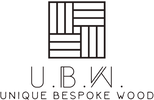|
Hardwood flooring is a very interesting option for your home. It can provide you with that touch of beauty and sense of luxury. If you are looking for that classic look, engineered flooring what you are looking for. Nevertheless, it is basically an installation project.
Real woods provide homes with appealing, warm, and refined appearance which makes it the top choice for many home decorators and families over the years. These appearances are those that vinyl and laminate floors cannot match. Nevertheless, wooden flooring has gained lots of attention and became popular due to the fact that engineered wood flooring has provided an option that is not only less expensive but more efficient, making it a good choice for every home. On several occasions, it is eco-friendly with a number of colors and finishes available. In fact, engineered wood flooring is one of the top choices you should consider for your property. Engineered Hardwood The processes involved in crafting engineered hardwood flooring are somewhat complex when compared to local hardwood planks. Engineered hardwoods contain multiple layers with the upper part in a veneer or another preferred choice. The thin outer piece is about 1/8 inch thick. Other layers of engineered hardwood consist of hardwood, plywood or high-density fiberwood. The veneer top surface provides the flooring with a touch of originality and beauty while the innermost layer offers a high level of strength. Concisely, engineered wood flooring is produced by layering woods on each other and then gluing and pressing them together to establish layers that are stable for flooring. These layers are placed carefully to ensure a cross-grain construction which, in turn, adds to its beauty and well resistant to water and moisture. Additionally, it hinders the wood from bending with time which has been the major issue faced by most homeowners with their local flooring methods. More so, there has been the evolution of unique features of engineered hardwood flooring which includes numerous new designs such as borders and Scotia. Pros With the layered design of engineered hardwood flooring, it is more stable and less likely to have any issue with moisture and dampness. Each of the layers is effective at hindering the penetration of moisture. This means that there would be less issue of floor swelling or warping and a general reduction in maintenance. Since engineered hardwood flooring needs only a thin layer of the desired wood type and supplement of others, they are often less expensive when compared with solid hardwood. Engineered flooring is also regarded as being eco-friendly for a number of reasons. The veneer is manually sliced and not with a machine. This means that fewer wood materials are produced as sawdust which makes then available for other important activities. Additionally, the trees that are used for engineered veneer are usually fast growing when compared with hardwood trees. Cons Engineered hardwood flooring does not have significant shortcomings. Although this type of flooring is cost-effective, there is still a host of cheaper ones that can be used on the floor such as tiles, carpets or laminates. At the same time, it is very important to select high-quality hardwood flooring in order to avoid problems of inferior qualities and manufacturing process. For instance, using a veneer that is very thin can hinder certain other refinishing and sanding work which can stand to extend the life of the original flooring.
1 Comment
|
- Home
-
Collections
- Timeless - Engineered Wood Flooring
- Solid Wood Flooring
- Chevron Parquet Flooring
- Parquet
- Wide Plank Wood Floor
- Live Edge Wood Flooring
- Engineered Ash Wood Floor
- Engineered Walnut Wood Floor
- Textured Wood Flooring
- Versailles Parquet
- Parquet Panels
- Mansion Weave Parquet
- Antique Wood Flooring
- Wood Cladding
- Charred Wood
- Wood For Stairs
- Unfinished Wood Flooring >
- Bespoke Wood Floor
- Services
- Information
- Room Ideas
- BLOG
- Contact
- FAQ
- Trade Program
|
|
|
UNIQUE BESPOKE WOOD
74/76 MONTROSE TERRACE, EDINBURGH, EH7 5DP
UNITED KIGDOM
[email protected] / 01316529873
74/76 MONTROSE TERRACE, EDINBURGH, EH7 5DP
UNITED KIGDOM
[email protected] / 01316529873
FOLLOW US ON SOCIAL MEDIA
© COPYRIGHT 2022. ALL RIGHTS RESERVED.


 RSS Feed
RSS Feed